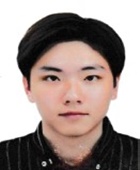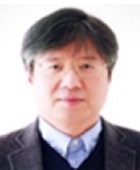
리니어 압축기 흡입계 형상에 따른 EER 변화 예측
Abstract
Refrigerators are comprised of compressors, condensers, expansion valves, and evaporators. Among these parts, a compressor accounts for the majority of power consumed by a refrigerator. Therefore, it is important to improve the efficiency of a compressor to save the electrical energy consumed in a household. In this study, the variation in energy efficiency ratio (EER) with respect to muffler shape was examined for a linear compressor suction system. Furthermore, two cases, namely the baseline model and modified model, were considered. For numerical analysis, a one-dimensional lumped model and CFD coupled model were adopted. The numerical analysis results indicated that the modified model improved EER by approximately 0.49% in comparison with the baseline model. Hence, the modified model was more effective in energy saving. Additionally, the experimental results were qualitatively consistent with the numerical analysis results.
Keywords:
Linear compressor, Suction system, 1D lumped model, 2D CFD model, EER (Energy efficiency ratio)Acknowledgments
이 논문은 2016년도 정부(교육부)의 재원으로 한국연구재단의 지원을 받아 수행된 기초연구사업(No. NRF-2016R1D1A1B02009582)의 연구과제입니다.
References
-
Porkhial, S., Khastoo, B., Modarres Razavi, M. R., 2002, Transient Characteristic of Reciprocating Compressors in Household Refrigerators, Appl. Therm. Eng., 22:12 1391-1402.
[https://doi.org/10.1016/S1359-4311(02)00046-7]

- Lee, H. K., Song, G. Y., Park, J. S., Hong, E. P., Jung, W. H., Park, K. B., 2000, Development of the Linear Compressor for a Household Refrigerator, Fifteenth International Compressor Engineering Conference, 31-38.
- Hou, X., Gu, Z., Gao, X., Feng, S., Li, Y., 2008, Analysis of Efficiency and Power Factor of Reciprocating Compressor Unit under Variable-frequency and Variable-conditions, Nineteenth International Compressor Engineering Conference, 1-7.
-
Jang, Y. N., Lee, Y. L., 2018, Effects of a Cooling Fan in the Machine Room on the Performance of a Compressor, Journal of the Korean Society of Mechanical Technology, 20:1 48-54.
[https://doi.org/10.17958/ksmt.20.1.201802.48]

- Binneberg, P., Kraus, E., Quack, H., 2002, Reduction in Power Consumption of Household Refrigerators by using Variable Speed Compressors, International Refrigeration and Air Conditioning Conf., 713-720.
- Oh, H., Kong, S., Oh, W., Park, K., 2016, Numerical Simulation for the Internal Flow Analysis of the Linear Compressor with Improved Muffler, 23rd International Compressor Engineering Conf., 1-6.
-
Noh, S., Oh, W., Park, K., Rhim, Y., 2015, Analysis of Dynamic Characteristics of a Piston for a Linear Compressor Considering Changes in Groove Geometry, J. Korean Soc. Tribol. Lubr. Eng., 31:5 221-228.
[https://doi.org/10.9725/kstle.2015.31.5.221]

-
Jeon, W. J., Son, S. I., Lee, H., Kim, J. W., Kim, K. W., 2016, Influence of Groove Location on Lubrication Characteristics of the Piston and Cylinder in a Linear Compressor, J. Korean Soc. Tribol. Lubr. Eng., 32:1 24-31.
[https://doi.org/10.9725/kstle.2016.32.1.24]

- Lee, B. C., Ahn, T. K., Lee, H., 2006, Experimental Study for Effective Flow and Force Area of Discharge Valve System in a Linear Compressor, J. Korean Soc. Precis. Eng., 23:7 122-129.
-
Choi, Y. S., Lee, J. H., Jeong, W. B., Kim, I. G., 2010, Dynamic Behavior of Valve System in Linear Compressor Based on Fluid-structure Interaction, J. Mech. Sci. Technol., 24 1371-1377.
[https://doi.org/10.1007/s12206-010-0423-3]

-
Hwang, I. S., Park, S. J., Oh, W., Lee, Y. L., 2017, Linear Compressor Discharge Valve Behavior using a Rigid Body Valve Model and a FSI Valve Model, Int. J. Refrig., 82 509-519.
[https://doi.org/10.1016/j.ijrefrig.2017.05.034]

- Bukac, H., 2002, Understanding Valve Dynamics, 16th International Compressor Engineering Conf., 1-10.
-
Oliveira, M. J., Diniz, M. C., Deschamps, C. J., 2016, Predicting the Temperature Distribution and Suction Gas Superheating of an Oil-free Linear Compressor, P. I. Mech. Eng. E-J. Pro., 231:1 47-56.
[https://doi.org/10.1177/0954408916674244]

- Ansys Fluent, 2014, Ansys Fluent Version 15, Ansys Inc.
- Ansys Fluent User’s Manual, 2014, Ansys Fluent User’s Manual Version 15, Ansys Inc.

Graduate Student in the Department of Mechanical Engineering, Kongju National University.His research interest is linear compressors.
E-mail: gkstkd3330@naver.com

Professor in the Department of Mechanical and Automotive Engineering, Kongju National Universtiy.His research interests are linear compressors, brake filters and heat pumps.
E-mail: ylee@kongju.ac.kr